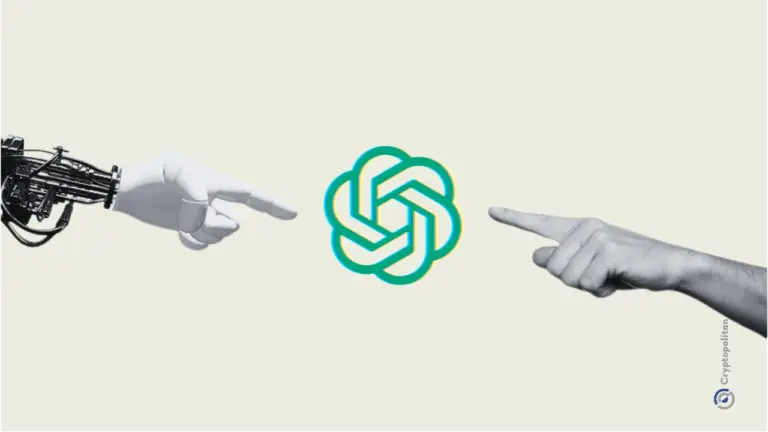Russia’s Central Bank Develops New Surveillance Platform to Target Illegal Crypto OTC Services: Report
Russia's Central Bank is developing a new surveillance platform to combat illegal crypto OTC services and enhance financial security.

The Central Bank of Russia is developing a centralized surveillance platform to identify and block illegal financial activities facilitated by so-called “mules”—individuals who use their bank accounts for dubious transactions, including over-the-counter (OTC) crypto trading.
According to a source close to the report, this initiative was conducted in collaboration with Rosfinmonitoring. It aims to enhance financial security and reduce the volume of shadow transactions involving online casinos, crypto exchanges, and illicit businesses.
The platform will centralize information about suspicious activities, allowing banks to act preemptively by refusing to open accounts for high-risk individuals.
Bogdan Shablya, head of the Financial Monitoring and Currency Control Service of the Central Bank, confirmed that the platform’s goal is to make illegal financial operations economically unviable by blocking access at the point of entry.
Unlike existing Know Your Client (KYC) systems, which primarily monitor businesses and rely heavily on reactive measures, this platform will proactively target personal accounts and focus on real-time detection of anomalous transaction patterns.
It will leverage advanced data analytics and AI-driven risk models to flag potential threats.
Russia Attack Crypto OTC: What’s Happening?
The platform under development will function as a unified database shared among Russian banks, allowing for the centralized dissemination of information about individuals identified as “droppers.”
These people knowingly or unknowingly facilitate illegal financial activities by providing access to their bank accounts.
Currently, the Central Bank can only alert the financial institutions where the dropper holds an account.
However, the new system will ensure that all banks have access to this information, preventing droppers from exploiting loopholes by opening accounts at different institutions.
According to Shablya in the report, this system is not a duplicate of the existing KYC platform for businesses but a specialized mechanism targeting personal accounts used for illicit purposes.
 Source: rbc.ru
Source: rbc.ru
The Central Bank’s data reveals that cashing out through individual accounts remains a significant issue, with 44.9 billion rubles processed through such channels in 2023 alone.
The platform aims to reduce this by blocking high-risk individuals from accessing banking services at the outset.
However, Shablya emphasized balancing security measures with citizens’ rights to avoid unnecessary disruption for legitimate account holders.
How the Platform Will Operate and Industry Reactions
The surveillance platform will compile information on suspicious transactions and distribute this data to participating banks.
While the Central Bank will provide initial assessments, individual banks will decide to block or restrict services.
The goal is to create a more synchronized approach to financial monitoring by ensuring that droppers cannot circumvent restrictions by shifting to smaller or less vigilant institutions.
Banks such as Sber, VTB, and Post Bank have supported the initiative.
Representatives from Sber noted that large banks with robust compliance frameworks can already detect suspicious activity.
However, smaller institutions often lack the resources to identify and mitigate risks effectively.
Critics of the platform have raised concerns about false positives and the long-term impact on individuals misidentified as droppers, similar to Shablya’s concerns.
However, the Central Bank has acknowledged this issue and called for a rehabilitation process that allows flagged individuals to contest their status and regain access to financial services over time.
Measures are said to be implemented to ensure that affected individuals are not left entirely excluded from the financial system.
The development is ongoing, and no specific launch timeline has been announced.
Russia’s stance on crypto regulations is getting tightened. A recent report shows that Russia is set to ban mining activities in 10 regions starting in January 2025.
Disclaimer: The content of this article solely reflects the author's opinion and does not represent the platform in any capacity. This article is not intended to serve as a reference for making investment decisions.
You may also like
Trump turns on ‘buddy’ Putin over Ukraine, says he’ll slap Russia with sanctions now
Share link:In this post: Trump warned he may hit Russia with new sanctions after fresh missile attacks on civilians. Trump met with Zelenskyy in Rome and called the meeting productive, but gave no full details. Trump offered a peace deal that includes recognizing Crimea as Russian territory, which Zelenskyy rejected.
Trump’s economic and geopolitical failures took center stage at Pope Francis’ funeral
Share link:In this post: Trump’s economic and diplomatic tensions took over the spotlight at Pope Francis’ funeral. Trump met briefly with Zelenskyy, Macron, and Starmer during the service but made little progress. Trump skipped a second meeting with Zelenskyy and left Rome quickly after the Mass.

Elon Musk and Nobel laureates call for investigation into OpenAI’s nonprofit mission
Share link:In this post: Elon Musk called OpenAI restructuring plan the “scam of the century” after experts oppose it. Legal and AI experts have called on Attorneys General of Delaware and California to OpenAI core mission as a non-profit. Concerns about Open AI deviating from its non-profit origins is not limited to Musk.

Republicans propose shutting down US audit regulator PCAOB
Share link:In this post: Republicans plan to scrap the Public Company Accounting Oversight Board (PCAOB). The agency’s responsibilities could be pushed to the SEC if the lawmakers succeed in shutting it down. Republicans also want to pass a major tax bill that could change the non-profit sector.

